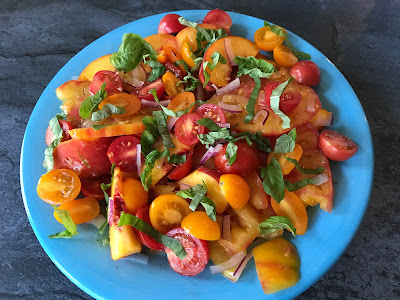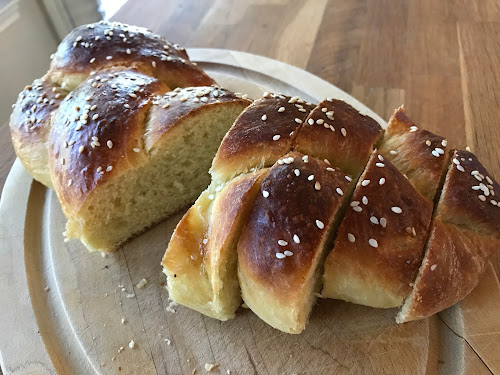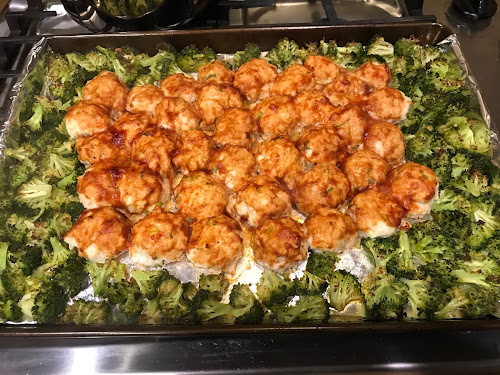My family and I just spent the weekend on Padre Island. The Fox had never seen the ocean, and the Little Prince didn’t remember it; I had wanted to stop there on our way up to Montreal this year, but we stayed put all summer… So when a friend of mine went to Port Aransas a few weeks ago and reported back that it was totally possible to do this while socially distancing, we decided to take a mini-vacation! We got a
hotel room with kitchenette, so we ate all our meals by ourselves, and kept our distances from anyone on the beach or in the pool, even though there were more people than I expected.
I decided to dig up this post about sunscreen because of a particularly bad experience we had, though. (The skeleton of this post had been languishing on my hard drive for a long time, but I’ve now updated it in the hopes that it can be useful.) I want to add a bit of an introduction because of an article that came my way recently, so here we go.
First, it turns out that most people don’t apply sunscreen properly –
here’s what proper usage looks like. Second,
here’s a thread with lots of links about the fact that chemical sunscreens (as opposed to physical ones) are absorbed by the body and we don’t have data to show whether or not this is potentially dangerous. Also, surprisingly, there aren’t any studies that conclusively link use of sunscreen with decrease in melanoma. (It’s not that studies prove it doesn’t help, it’s that there aren’t any well-done trials.) And third, I just read this a few weeks ago and had my mind blown:
Is sunscreen the new margarine? This article essentially explains that people who use sunscreen have a higher mortality rate from various diseases, even when you adjust for exercise and lifestyle. This actually explains why low levels of vitamin D are correlated with higher mortality rates, but vitamin D supplements have zero effect on health (see
here too, and keep in mind that
supplements can cause more harm than good). Essentially, it seems that exposing the body to sunlight, without any filters like sunscreen, is essential and that the tendency to get sunburn is in part caused by lack of exposure. It’s a negative feedback loop, in a way.
I know that this has been true for me to a certain extent: I used to get sunburned on my feet and shoulders at the beginning of summer when I was a child, but by the end of summer I had the clear white markings of my sandals and swimsuit straps on much browner skin, and would keep those markings right through the following spring. So while I am predisposed to getting sunburns, if I were to power through without sunscreen for a summer and made it through the burns, I’d be less fragile after several months. (As it is, after living in Texas for one year, the skin on my forearms was already darker than it had ever been, BUT I’m still pale compared to the general population and still fully capable of getting a sunburn on my forearms.) That being said, I remember reading an article years ago (in…
Marie Claire magazine?) that listed the five most important risk factors for skin cancer as, in no particular order and to the best of my recollection: having fair skin that tends to burn easily; having more than 20 moles on your body; having pale eyes or hair (like blue or green eyes, or blonde hair even if only as a child); having had painful sunburns in the past, especially before the age of 5; and a family history of skin cancer. The only risk factor I don’t have is the family history, and since my annual visits to my primary care physician haven’t revealed an increased risk of any of the diseases associated with low levels of vitamin D, I think that the best thing for me to do is to continue wearing sunscreen, especially now that I live in South Texas. I do get an annual checkup at the dermatologist, too.
So, back to last weekend at the beach… You see, I thought that I should try some sunscreen with a spray applicator, so that I could be self-reliant and apply sunscreen to my back without asking for help. I bought
Sun Bum SPF50 water-resistant spray; I figured it was a good brand because I really like their (“regular”) cream/lotion sunscreen in a tube. Turns out that I still needed help, because the can is hard to angle right, and directions say you have to rub it in. But still, it’s very easy to apply, so I thought it would be great for the kids – I used a regular cream sunscreen on their face and the spray on their body, which was a breeze. And I used this spray to reapply throughout the morning at the beach. And… we all got sunburns. For both my kids, it was the very first sunburn they’d ever had. Remember how one of the risk factors for skin cancer is getting a sunburn before the age of 5? I got the Little Prince through that window unscathed, but now I’ve dropped the ball with the Fox and I feel really guilty about it (even though, again, it’s not because I didn’t put sunscreen on him or didn’t reapply, it’s because I chose a product that, it turns out, doesn’t work).
Let me tell you about a few products that DO work. I’ve been using
Supergoop! for a few years now and I really like it. It’s a local (San Antonio) company that makes 100% mineral sunscreens, and they really live up to their promise. I first tried their
Unseen Sunscreen, which is an invisible, fragrance-free SPF40 sunscreen. I believe it’s their bestseller. I love it because it really does go on clear, and it doesn’t smell like sunscreen so it’s that much more unobtrusive. It also absorbs really quickly in the skin. For those who wear makeup, it works as a primer. I really don’t feel like I’m wearing anything, which makes me more likely to use it. However, at $32 for 1.7 ounces, I feel like I have to use it sparingly, so I’ve never used it to cover my whole body when I go swimming, for example. But it’s great for my face, and I’ve used it as an on-the-go touch-up so I wouldn’t have to worry about whether I had white streaks left on my face.
I later bought their
Glowstick, which is convenient to keep in my purse (though I’ve put it in a plastic baggie because I’m afraid it might melt); that being said, even though it’s also streak-free, it does leave a shiny finish that isn’t really what I’m going for. I now have two go-tos for use on my face on a near-daily basis: Supergoop’s
Superscreen Daily Moisturizer, which feels great and has an SPF of 40 (I highly recommend that one!); and I also use
Olay Complete’s daily moisturizer with SPF 30 for sensitive skin. There are still days when I forget, but I now try not to beat myself up about it, given the article I linked to earlier. That article also made me decide not to order
this 18-oz pump of sunscreen after all, but don’t think I’m not tempted.
I’ve also been using
Neutrogena Hydro Boost Water Gel Lotion Sunscreen regularly (it’s a mouthful, I know!). It’s absorbed by the skin quickly so there are no white streaks, and it feels very light. It has a smell that reminds me of a Dove deodorant I once used (it was called “cucumber” or something, but it obviously doesn’t smell like produce). This is to say that it has a fragrance, but not something that screams “sunscreen”, which makes it more pleasant to use on a daily basis. I first bought the SPF 50, but when I needed more, the bigger format (5 fluid ounces as opposed to 3) of SPF 30 was on sale, so I’ve used that too. The smaller format fit in my countertop tray better, but the bigger one is more economical, so it’s a toss-up. Anyway, price-wise, it’s a good value, at roughly $12 for 3 fluid ounces. But I have to say that whenever I used it on my face, it wasn’t long before it got in my eyes, and then my eyes would periodically burn until I showered it off, so I use it on my arms and other exposed body parts rather than my face.
For the kids, I’ve been using Banana Boat Sport Performance in SPF60 (
this is the closest I can find on their website) and
Babyganics SPF50; both are waterproof. It takes a while to rub it in, but it’s effective. Even though their skin is more like the Engineer’s skin (prone to deep tans instead of burns), it’s obviously made a difference, as evidenced by the one time I used something else last weekend.
In conclusion, if anyone can recommend either a good product or a good method to sunscreen one’s own back, I’m all ears.

























